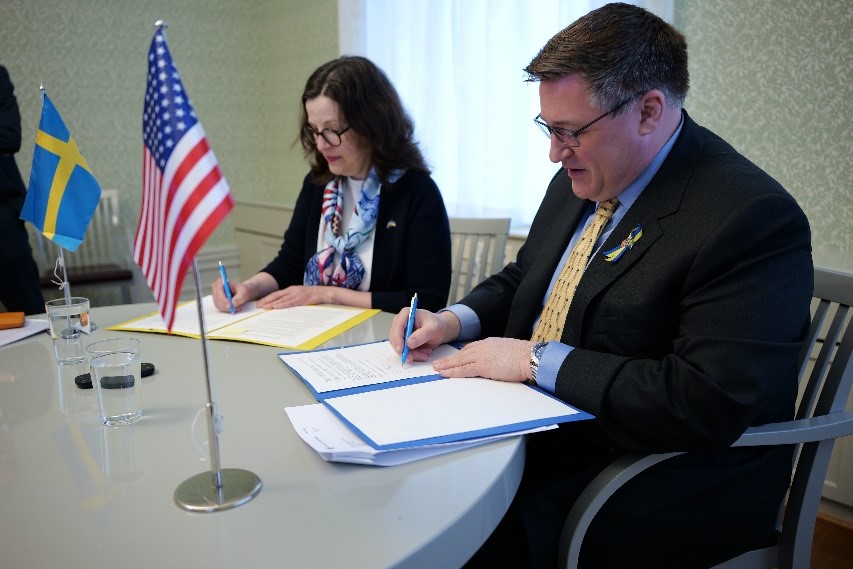
Photo by Ulrika Westerberg at the Government Offices of Sweden.
On April 8, the United States and Sweden signed a Joint Statement on Cooperation in Quantum Information Science and Technology (QIST), building upon a strong history of bilateral friendship that dates back to 1783, when Sweden was one of the first countries to recognize U.S. independence. The shared heritage between the United States and Sweden dates back to 1638, when the first Swedish immigrants arrived on the shores of Delaware. The United States and Sweden have enjoyed a fruitful and diverse science and technology cooperation, including a Science and Technology Agreement signed in 2006 that has led to several bilateral Implementing Arrangements throughout the years.
Erik Ramanathan, the United States Ambassador to Sweden, signed the joint statement in Stockholm for the United States. “QIST is promising for applications in improved models of our climate system, better battery technologies, new medicines, novel carbon capture materials – indeed, quantum information science and technology represent a pathway to a more sustainable future,” said Ramanathan.
Anna Ekström, Minister for Education, Ministry of Education and Research, signed the joint statement in Stockholm for Sweden. She said, “In Sweden, there are several research environments with world-leading research in quantum technology. By making a joint statement that we want to collaborate in the quantum field, Swedish and American researchers get the opportunity to collaborate with the best researchers in this field in our two countries. It contributes to strengthening our position as leading research nations.”
In recent years, the two countries have poured resources into QIST. In the United States, the 2018 National Quantum Initiative led to the creation of 13 QIST centers to carry out research and development, the National Q-12 Education Partnership to stimulate the next-generation quantum workforce, and an industry-led quantum consortium. In Sweden, a SEK 1 billion center spanning multiple universities was established in 2018 to create long-term cutting-edge expertise in quantum computing, simulation, communication, and sensing.
Charles Tahan, the Assistant Director for Quantum Information Science at the White House Office of Science and Technology Policy, and Director of the National Quantum Coordination Office gave virtual remarks. “Quantum information science promises transformative advances in computing, networking, and sensing. Today’s statement implores us to move faster together to overcome the roadblocks toward useful applications of new quantum technologies,” said Tahan.
Samuel Engblom, State Secretary at the Swedish Ministry of Education and Research, said “This common statement is another opportunity for close collaboration between researchers in our two countries. Working together will also support the development of the next generation of scientists and engineers in quantum and other technologies.”
The Joint Statement advances the shared agendas of both countries to engage in good-faith cooperation in QIST, such as to build a global market and supply chain, and to create respectful and inclusive scientific research communities.

